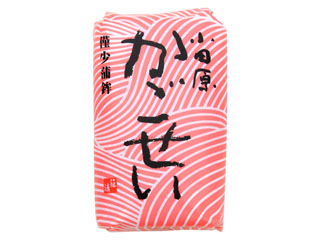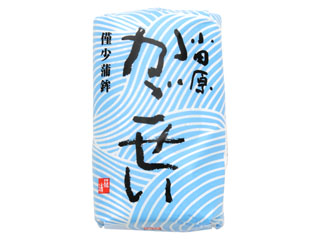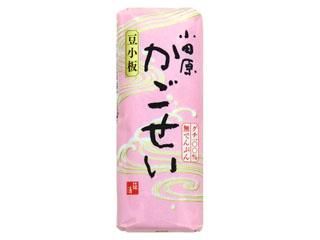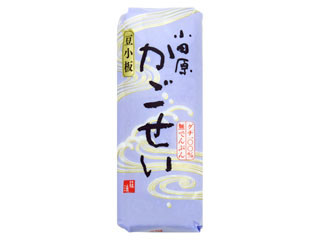Osechi Items for Japanese New Year
- MAIDO
- Dec 16, 2023
- 9 min read
Updated: Dec 13, 2024

Hello everyone. Are you looking for a way to celebrate the Japanese New Year? We are introducing Maido's selection of traditional osechi sets and individual items!
As many of you must already know it, we make our own osechi at Maido, but we also offer some types of osechi sets and individual osechi items at the store. These are not made by us, but by famous and popular Japanese companies. They come in frozen, and we sell them in the freezer. So, you can keep them fresh until New Year, as they are traditional Japanese New Year foods usually enjoyed between 1/1 - 1/3 in Japan.
After reading this blog post and the next blog post, you can know about the unique flavors of osechi items with all of the festive and meaningful meanings behind them. You can also learn about the fascinating history of the osechi culture too. Then, head to the Maido store and get your authentic osechi items to get ready for celebrating and experiencing the richness of Japan's New Year traditions with all of their flavors, meanings, and history.
***
Osechi Sets
We'll introduce the sets we offer and what are included in each set first. If you would like to know about each item in detail, please check the individual item's description after this section.

Kibun, Toshigamisama New Year's God Hospitality Set - New Year's Day
It's a set of 6 dishes with 5 kinds of osechi items in moderate portions.
Toshigamisama is the God who visits households from high mountains at sunrise on New Year's Day, bringing good fortune for the year ahead and presiding over the protection of the household for the year to come. In some regions, it is said that the souls of ancestors would go to the mountains and return seven generations later as ancestral spirits to protect their homes as Toshigamisama. Osechi and kagamimochi rice cakes (we also offer them at the store now) are served at home to welcome them.
Kibun was founded in 1938 as a rice distributor in Tokyo and eventually began selling wholesale seafood products, then manufacturing seafood paste products. The founder's desire to deliver the best products to customers while they are still fresh led to the creation of product packaging, the development of fish paste, the establishment of a chilled distribution network, and other cornerstones of fish paste manufacturing and sales, and have continued to provide a wide variety of memorable products to people around the world. They do business with pride, so you will surely love their products.
Contents: Kobu maki (kelp rolls) / Tanba kuromame (sweetened black beans) / Kuri kinton (candied chestnut and sweet potato) / Datemaki (rolled sweet egg omlette with fish paste) / White Kamaboko (fish cakes) with sea bream / Red Kamaboko (fish cakes) with sea bream
**

Kibun, My Family's Osechi Set - Fukushuku Good Fortune & Celebration
Here is another Kibun osechi set. It includes a set of four popular osechi dishes along with directions on how to present the food on your plates. Kamaboko is pre-cut, so you can enjoy it simply by serving. By following the directions, you can make the presentation of your osechi better. Your family and toshigamisama can feel the dignity, so more luck and fortune must be brought to your household this coming year by having it.
Contents: Datemaki (rolled sweet egg omlette with fish paste) / Tanba kuromame (sweetened black beans) / Kuri Kinton (candied chestnut and sweet potato) / Red Kamaboko (fishcake)
**

Niitakaya, Osechi Set
It has an assortment of five different kinds of osechi items. It is already prepared, and is ready to serve, so you do not have to worry about how to present them on a plate. Furthermore, you can just throw away the container when it is finished, so it is suitable for your busy life. (Of course, you can reuse the container as well.) Another plus is that every portion is not that big. It is perfect for a small number of people who want to have some osechi, but don't want a lot. Also, if you want to try osechi but you are not sure if you like it, you can definitely try this set.
Niitakaya has been based in Tokyo for 90 years as a pickles manufacturer and continues to bring the taste of Japan to the world. The company is generally recognized as an Imperial Household Agency purveyor due to the fact that their products have been used by the Emperor and other members of the Imperial Family. The Imperial Household Agency purveyor is often featured in magazines and TV media, and their products have been introduced as a part of it.
Contents: Tazukuri (candied sardines) / Kuromame (sweetened black beans) / Kuri Kinton (candied chestnut and sweet potato) / Hime Ebi (candied shrimp) / Kobumaki (kelp rolls)
*Tazukuri and hime ebi are available only in this set!

Tazukuri (candied sardines)
Tazukuri was named after the small fish that were sprinkled as fertilizer on the fields in hopes of a bountiful harvest. Tazukuri made with small sardine fish (gomame) is one of the three celebratory snacks in both the Kanto and Kansai regions.

Hime Ebi (candied shrimp)
Shrimp have long whiskers and are used for New Year's decorations and osechi dishes in the hope that they will live long until their waist bends - When boiled, shrimp's waist bends like elderly people's. Considering this, it can be said that the more curved the waist of a shrimp in osechi is and the longer its whiskers are, the better the luck.
**

Kagosei, New Year Set
This set includes red and white small kamaboko and mini sized datemaki. It is convenient to have a little bit of each item. If you are not familiar with very authentic Japanese flavors, this set is good, as none of these items have overpowering flavors. They can be enjoyed even by children.
Kagosei is a fish cake manufacturer in Odawara, and was established in 1814. They are very particular about fresh fish, water, and the manufacturing process in their factory, so you can enjoy the first-rate taste with their products.
Contents: White Kamaboko (fishcake) / Datemaki (rolled sweet egg omlette with fish paste) / Red Kamaboko (fishcake)
***
Individual Items

Kamaboko (Fish Cake)
Kamaboko is a fish cake made by kneading fish meat with salt and seasonings into a paste and steaming or baking it to heat coagulate the protein.
The combination of red and white is for celebration in Japan. The red color is used to ward off evil, and the white color means purity. Having two common colors, red and white, kamaboko is perfect as a Japanese New Year dish. The red kamaboko has the red rim (the actual color is pink) with the white inner part and white kamaboko has white color entirely.
The fish cake is usually on a wooden board inside the package and they are attached to each other, so you can cut out the bottom part, then slice it to your desired widths. The wooden board is not edible. Make sure not to eat it.

Kazarigiri decorative cuttings are sometimes made in the shape of cranes, pine trees, and other auspicious symbols. If you are good at using a knife, you can try cutting those shapes to make your New Year dish more special and memorable. There are some easy ones as well.Kazarigiri decorative cuttings are sometimes made in the shape of cranes, pine trees, and other auspicious symbols. If you are good at using a knife, you can try cutting those shapes to make your New Year dish more special and memorable. There are some easy ones as well.
Kazarigiri decorative cuttings are sometimes made in the shape of cranes, pine trees, and other auspicious symbols. If you are good at using a knife, you can try cutting those shapes to make your New Year dish more special and memorable. There are some easy ones as well.
Kagosei, Kamaboko Red (left),
Kagosei, Kamaboko White (right)
These kamaboko are made mainly from selected high-quality guchi drum fish paste.
Kagosei, Mamekoita Kamaboko Red (left),
Kagosei, Mamekoita Kamaboko White (right)
These are starch-free kamaboko made from 100% guchi drum fish paste.
**
Easy Decorative Cut, "Braid"

Here is a cute and easy way to decorate and cut fish paste, perfect for New Year's osechi. With this method, even those who are not very dexterous with their hands will definitely want to give it a try.
Ingredient:
1 red kamaboko

1. Remove the kamaboko from the wooden board. Place the back of the knife in the gap between the kamaboko and the board to ensure clean removal. Then, slice into 0.4" / 1 cm pieces.1. Remove the kamaboko from the wooden board. Place the back of the knife in the gap between the kamaboko and the board to ensure clean removal. Then, slice into 0.4" / 1 cm pieces.
1. Remove the kamaboko from the wooden board. Place the back of the knife in the gap between the kamaboko and the board to ensure clean removal. Then, slice into 0.4" / 1 cm pieces.

2. Peel the pink part off, leaving about 1/4. Cut the peeled part into three equal lengthwise sections.

3. Braid three parts you cut in step 2. Repeat for the rest of the slices. Then, it is ready.
**

Datemaki (Rolled Sweet Egg Omlette)
Datemaki is made by adding beaten egg and soup stock to ground white fish or shrimp, mixing well, seasoning with mirin and sugar, and cooking. While still hot, it is rolled and shaped with a bamboo mat. Its fluffy texture and mild flavor will surely give you an unforgettable osechi experience. Along with kamaboko, it is loved by all generations from children to elderly in Japan.
Because the shape resembles a scroll, it is hoped that it will increase knowledge.
Kagosei, Datemaki
It is one of Kagosei's signature products that is popular among customers for its moderate sweetness and moist flavor.
Kibun, Less Sweetened Datemaki
This is a lightly sweetened datemaki made with the best of Kibun's technology to create a light and fluffy texture.
**

Kazunoko (Herring Roe)
The kazunoko is a good-luck item for wishing for a prosperity with having children because of their large number of eggs. It is usually made by being cured in salt or soy sauce, or dried. What we offer this year is Matsumae-zuke.
In Matsumae-zuke, ingredients such as kazunoko, kelp, and carrots are used. The mixture of sake, mirin, soy sauce, and red pepper is boiled once, and when the heat is removed, kazunoko is cured in salt and other ingredients cut into thin strips are added.
It is said Matsumae-zuke originated in the Matsumae-clan. It was a clan of the Edo Shogunate located in Ezo, the northernmost part of Japan (present-day Hokkaido). It is said that Matsumae-zuke was created in order to consume large quantities of herring roe and to enhance preservation, since many herring were caught in this area from the late Edo period to the Meiji period. It was made from locally harvested ingredients. It is said that fishermen's mothers made it as a winter dish later and it became popular.

Tsukiji Uogashi, Kazunoko Herring Roe Matsumazezuke
It is free of preservatives and coloring agents, making it ideal for those who are particular about eating healthy. It has Gagome kelp from Hakodate, Hokkaido. It is characterized by its stickiness, and this stickiness contains fucoidan and other ingredients that are good for your body.
**

Kobumaki (Stuffed Kelp Rolls)
The word "kobu" was thought to be good luck, as it is the same as "yorokobu" (to be happy). It is also written "子生" in kanji (Chinese characters) to express a wish for the prosperity of one's offspring.
Kombumaki is a dish made by rolling kombu kelp and simmering it in soy sauce, sugar, mirin, and other seasonings. It can be made with or without stuffings. Kazunoko herring, salmon, or cod roe are usually used as fillings, but some families use meat such as beef and pork, as well as vegetables like carrot and gobo burdock root. What we offer at Maido do not contain anything inside.
Kibun, Less Sweetened Kobumaki
This is made with less sweetness. Hokkaido kelp is used and cooked to a glossy shine.
Niitakaya, Kobumaki
It is a product from a pickle shop, which is delicious and full of flavor.
**

Kuri-kinton (Candied Chestnut and Sweet Potato)
Kuri-kinton is a mixture of peeled kuri chestnuts and yellow sweet paste made of sweet potato and sugar.
This dish is likened to a golden treasure, and is a wish for a prosperous year. Chestnuts, which are ubiquitous throughout Japan, are a representative of mountain delicacies, and have been revered as a good omen, called winning chestnuts.
Kibun, Less Sweetened Kuri-kinton
This is made by carefully peeling chestnuts one by one, kneading them into a glossy paste, and combining them with sweet potato paste. The sweetness is moderate.
Niitakaya, Kuri-kinton
This product is also one that is carefully crafted by artisans. It is a small, ready-to-eat size.
**

Kuromame (Sweetened Black Beans)
Kuromame is a dish made by soaking black soybeans in water until they get soft and then boiling them sweetened with sugar.
It is meant to ward off evil spirits and to wish that people will work diligently with the beans to the extent that they become tanned and black. (Japanese people say your skin turns black when you get tanned, without any offensive meaning).
Kibun, Less Sweetened Tanba Kuromame
This is made with famous Okayama Tanba kuromame. It is also moderately sweetened.
Niitakaya, Kuromame
The kuromame are boiled down to a fluffy, glossy, and rich flavor.
***
There is a lot of food items, housewares, stationery, and gifts available at the store and our online store, Maido! Kairashi Shop, where you can place your order for shipping or store pickup! Happy shopping. :)




















